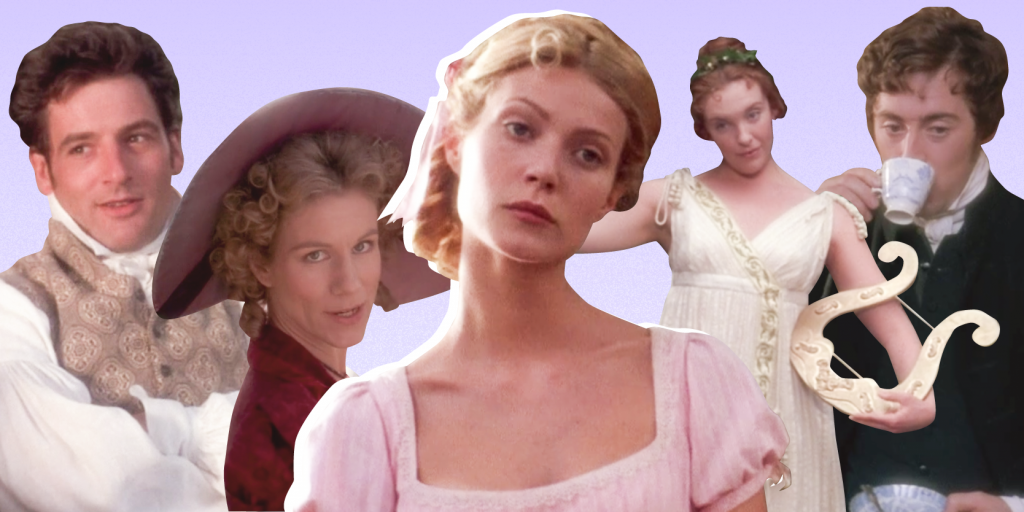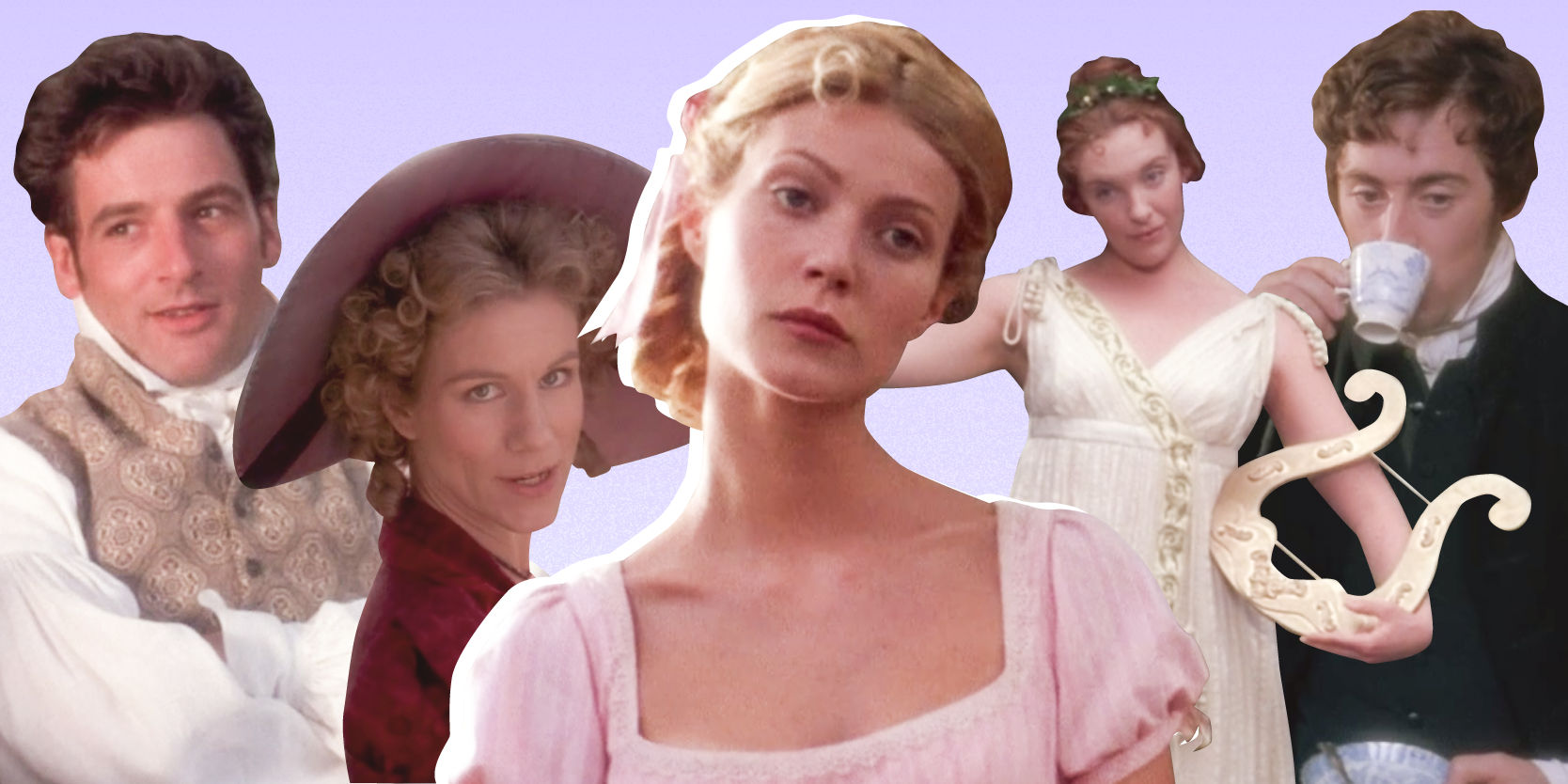
Miramax; Shayanne Gal/Insider
When Ruth Myers created the wardrobe for the 1996 film "Emma," she skipped a famous step of British period-piece costumery: tea-dipping.
Though befitting of early 19th-century British fashion, submerging the clothes in tea would have created a well-worn effect antithetical to what writer and director Douglas McGrath envisioned for his adaptation of Jane Austen's 1815 novel. Instead, he and Myers wanted outfits that looked "completely free and completely lovely," the costume designer told Insider in honor of the film's 25th anniversary this month.
So, they opted to dress the "Emma" actors in vibrant hues of cotton-candy pinks, baby blues, and lush greens. To many Austen enthusiasts at the time, this decision was inconceivable.
"I met an awful lot of resistance in those days," Myers continued, "from the people who were manufacturing and making these clothes, who were absolutely horrified that I should have pink and beautiful apple green and all these wonderful colors."
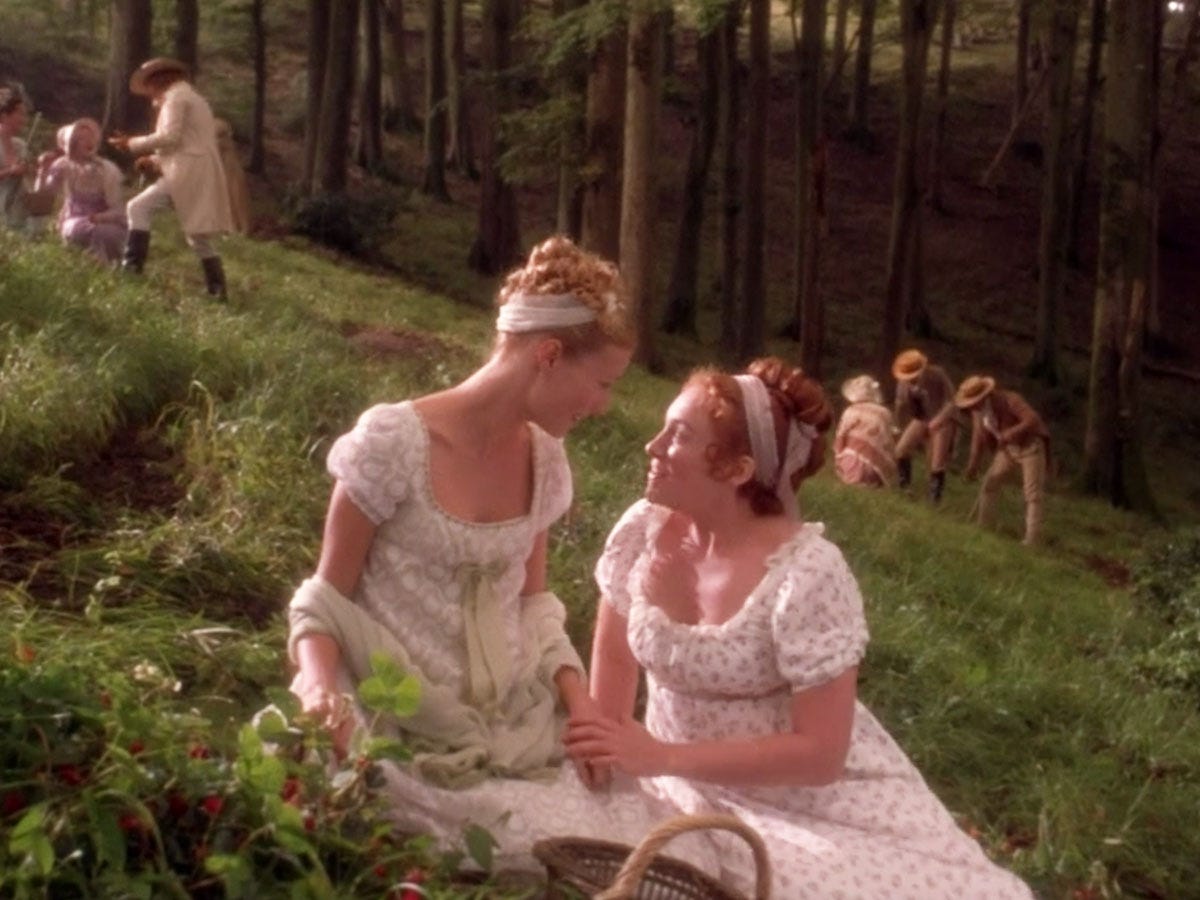
Miramax
McGrath, who was known at the time for his previous writing on "Saturday Night Live" and "Bullets Over Broadway," stayed true to Austen's plotline, following young society woman Emma Woodhouse (Gwyneth Paltrow) on her matchmaking endeavors.
But on the heels of a mid-'90s resurgence of on-screen Austen adaptations, the Texas-born writer set out to deliver his own fresh, youthful take on the genre while still paying homage to the source material.
With the help of a British costume designer unafraid to go head-to-head with disapproving traditionalists, he did just that.
Myers spent weeks drawing the 'Emma' designs in Helen Mirren's London flat
For roughly five weeks before production began, Myers stationed herself in the living room of Helen Mirren's flat overlooking London's Battersea Park, sketching designs for "Emma" by hand.
Because the Miramax film's budget was tight (an estimated $6 million) and the residence was vacant, Mirren lent the space to her childhood friend, who lived in Hollywood full-time. Myers designed around 120 costumes during her stay there, averaging about five drawings per day.
"Without Helen, I would never have done the film," she said.
Myers had McGrath's blessing from start to finish. She remembered covering the floor of Mirren's flat with patterned, colorful fabrics one evening and inviting the director over to review them.
"He reacted very strongly to them," she recalled. "This was exactly what they wanted."
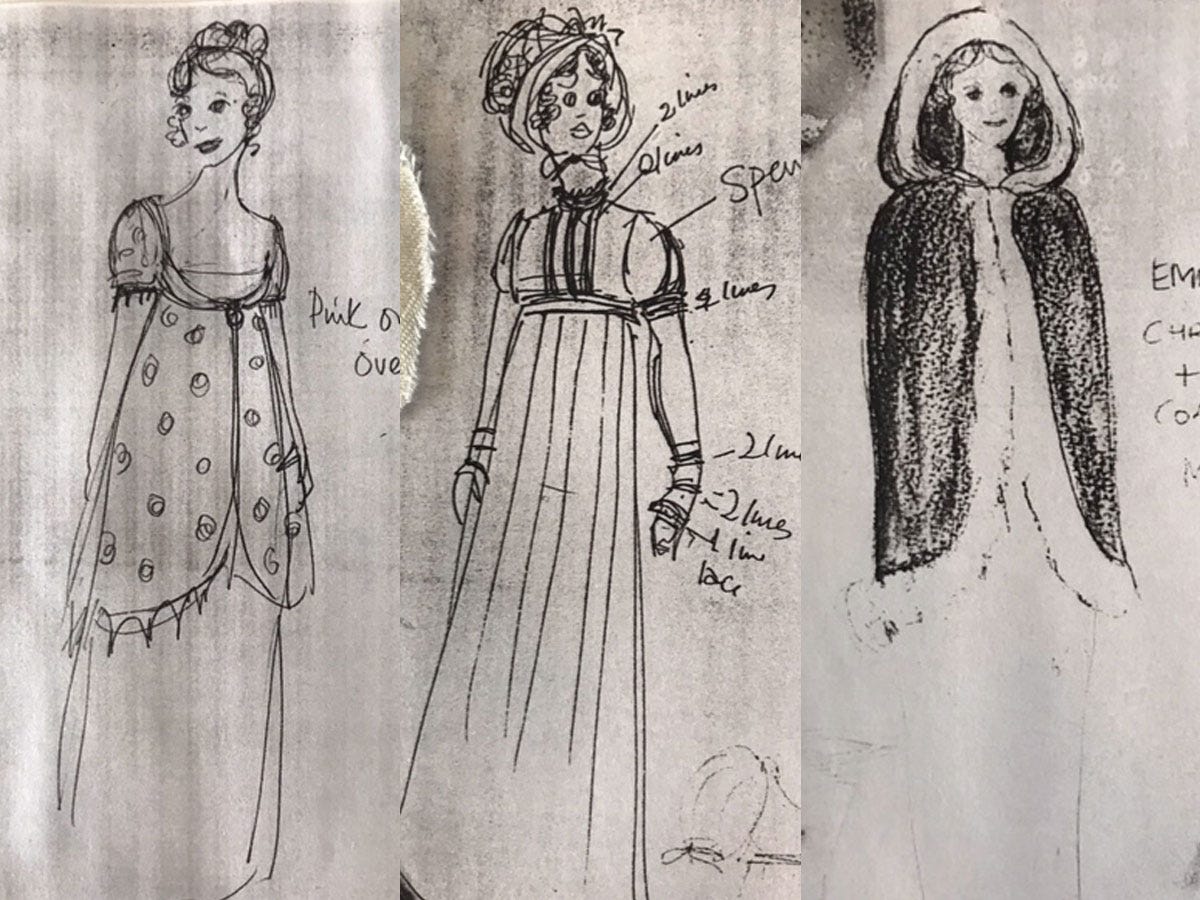
Ruth Myers
In the early stages of conceptualizing the wardrobe for "Emma," Myers delved into research about early 19th-century England.
She eventually stumbled upon "Mrs. Hurst Dancing & Other Scenes From Regency Life," a book featuring watercolor paintings drawn by artist Diana Sperling between 1812 and 1823. The tiny figures, clad in "ice-cream shades of costumes," became her bible, she said, adding, "I threw everything else away."
Myers became entranced by Sperling's fluid and playful depiction of Regency life, inspiring her to push McGrath's film away from the neutral tones and rigid costuming so frequently featured in Austen adaptations. She pictured Emma, a young woman disinterested in the prospect (and constraints) of marriage, in ensembles reflective of her character.
"Emma, she's a free, self-thinking, active person. Her father encouraged that," Myers said, noting that "Emma" remains her all-time favorite of the author's novels. "If we were doing that, we needed to have the freedom to do it properly."
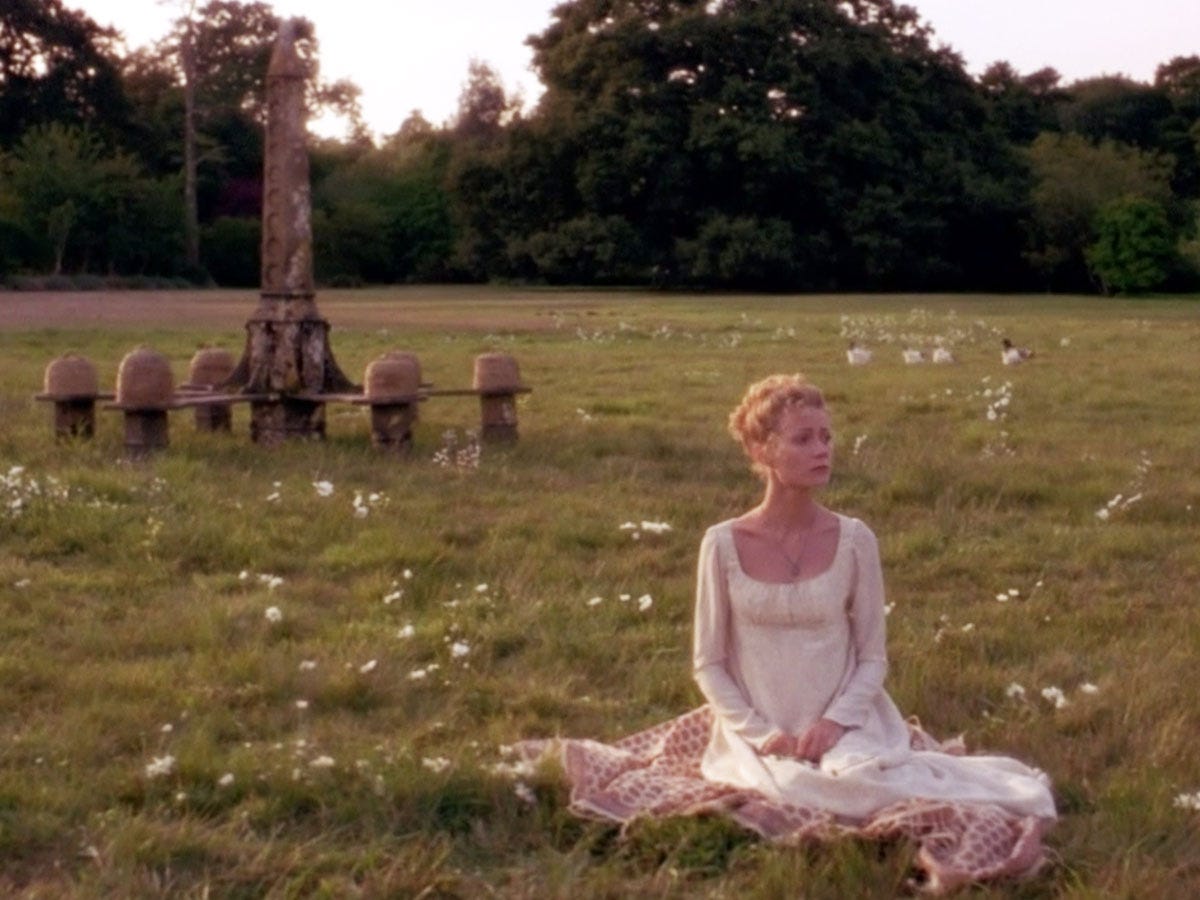
Miramax
Freedom, in Myers' mind, began with ridding women of corsets. It was a bold decision for an Austen adaptation, and one that gave the designer a "very horrible time in England for quite a long time." Aware of the criticism her designs would receive from some of Austen's most-devout readers, she trudged forward with Sperling's art as her sole guide.
"These paintings, they're watercolors with line drawings. They're very lyrical and they look absolutely free. They're not restricted by corsets," she reasoned.
To give the illusion of high busts on the women, the actors wore Wonderbras and push-up bras beneath their dresses.
"When you look at a painting of 1820s costumes, they don't look as though they're heavy, but when you have to hide a corset, which is what they did, they are really quite heavy. I wanted not to have that throughout the film. So a lot of the women's stuff was made," Myers added.
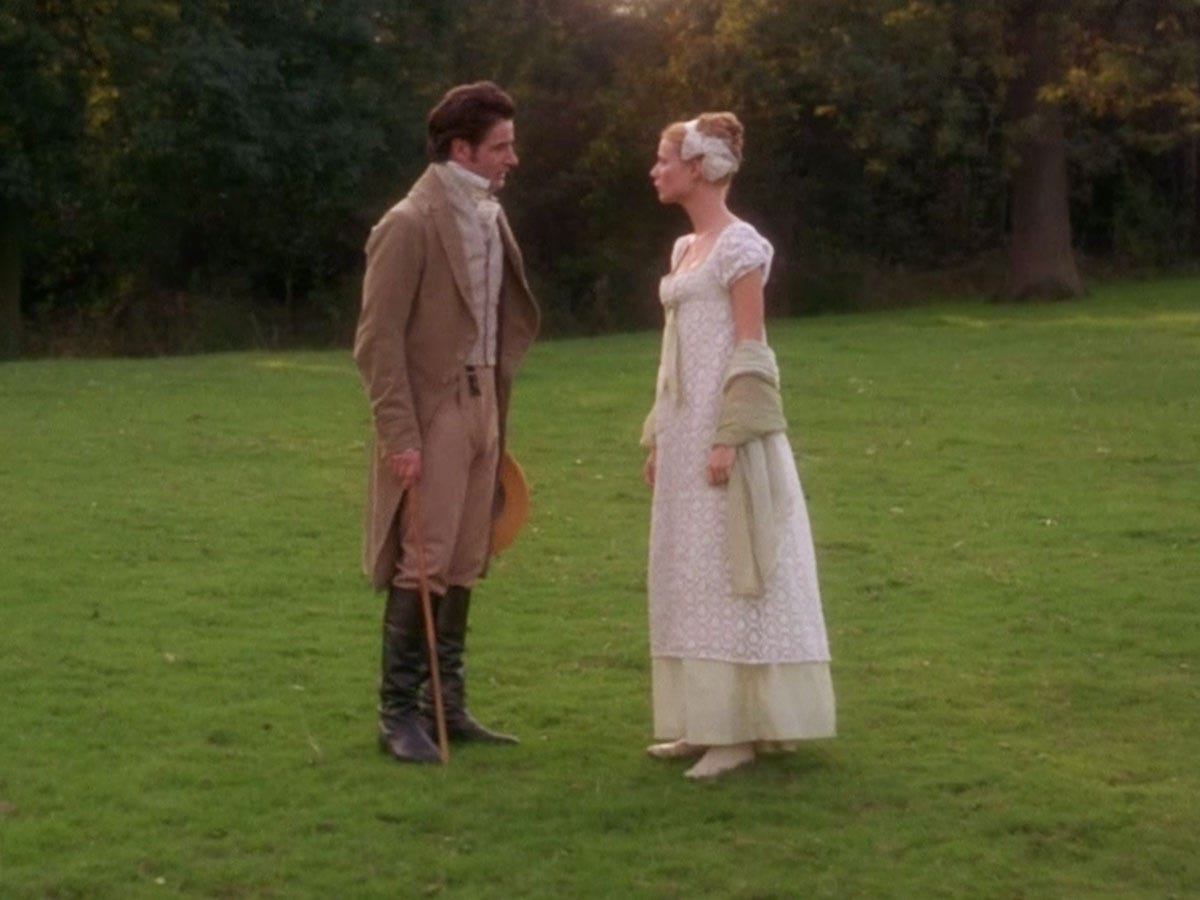
Miramax
She sent her designs to John Bright's costume house, Cosprop, to create the majority of the women's clothes, unable to rent the pieces she wanted from third parties, as many period pieces do. The trick, however, was bringing her vision to life while adhering to the budget.
"That was a question of persuading and controlling people into doing things very cheaply," Myers said.
Rather than wearing the stiff lace-up boots customary to the period, Myers' society women donned ballet shoes from Repetto, a French brand created in 1947 and worn by premiere dancers. The little slippers, she said, felt similar to "wearing gloves."
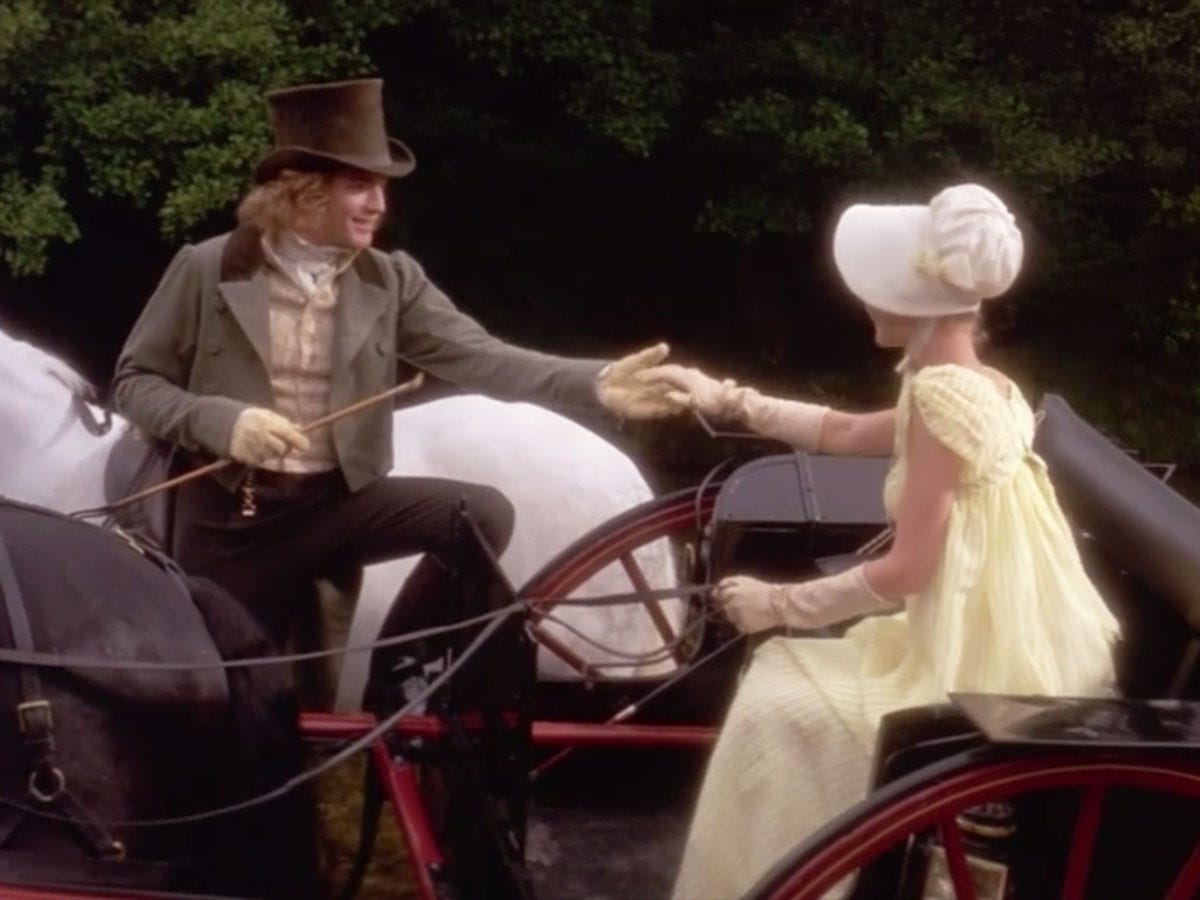
Miramax
The bulk of a costumer's job is making the actors feel comfortable in their attire
When McGrath cast Paltrow in the titular role, she was already on her way to becoming a major movie star.
She gained critics' attention for her performance in "Flesh and Bone" at 20 years old. Her popularity continued to surge thanks to "Se7en," a film that led to a Saturn Award nomination and a highly-publicized, three-year relationship with costar Brad Pitt.
So for Myers, receiving news that the rising star would wear her designs was a dream.
"It was a hole-in-one. Once they say 'Gwyneth Paltrow,' you look at your vision and you look at a picture and you go, 'Oh my God, this is beyond easy,'" Myers said.
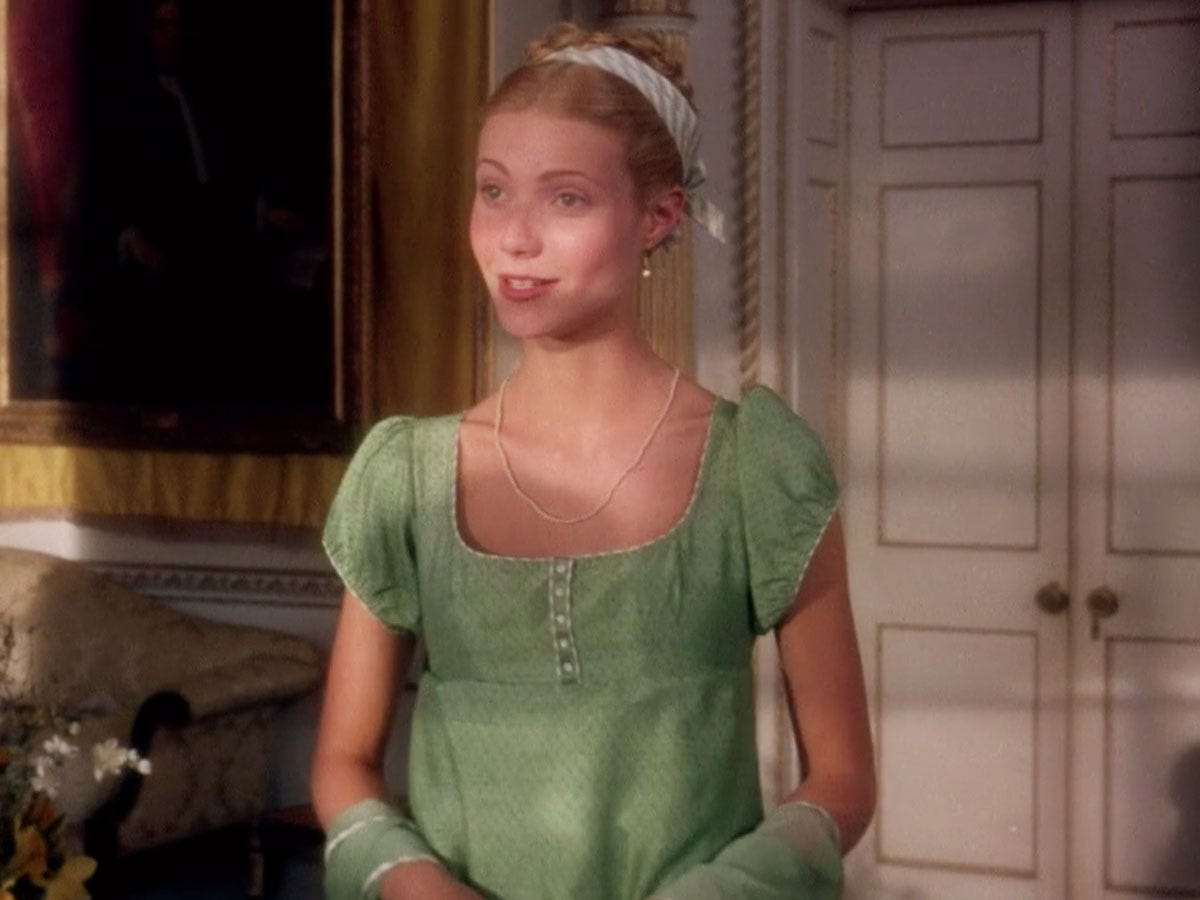
Miramax
After securing the lead role by impressing McGrath with her Texas accent at her first read-through, the Los Angeles-born actress arrived on set "prepared to play," Myers remembered.
Despite her stateside roots, Paltrow had all the trappings of the ultimate Regency-era demoiselle. She was proficient in shooting a bow and arrow, singing an on-key lullaby, and speaking in a polished British accent on arrival.
Of the roughly 22 costumes Myers recalled designing for Emma, the pink cotton frock she wore in the archery scene, filmed in Dorset, was the designer's favorite.
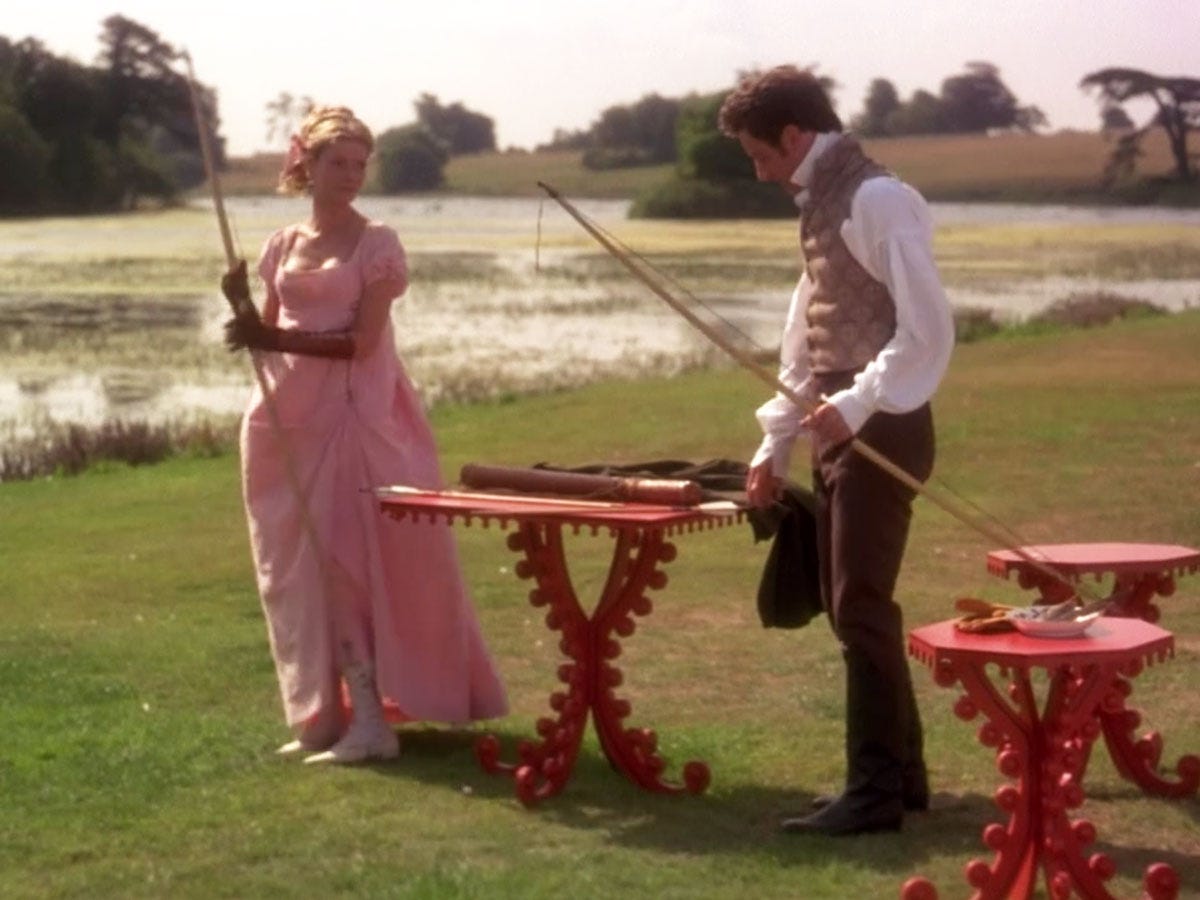
Miramax
"This is the dress that gave traditionalists the horrors because it was bright pink," she said, adding that it's still the ensemble that makes her the proudest. "It was Gwyneth, and it was summer, and it was everything joyful about the English country."
The designer paired the look with an elbow-high leather glove she discovered while researching early-19th-century archery attire.
"I remember being thrilled because it looked exactly as I'd hoped and imagined it would. The weather was perfect. Everything about it was exactly as it should have been."
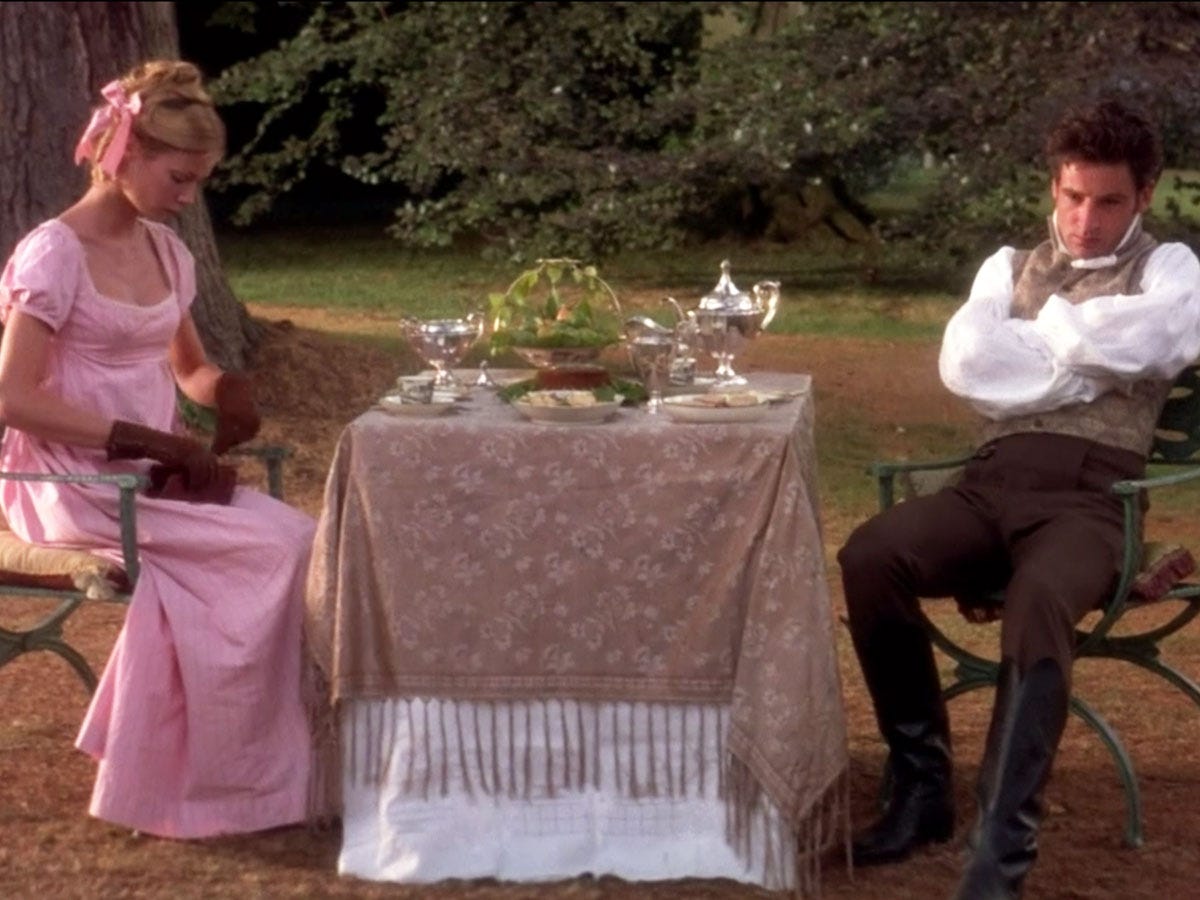
Miramax
But landing a lead with fabulous posture and sample-size proportions doesn't clear a costume designer of all obstacles.
According to Myers, "75%" of her job is making sure actors respond well to the designs she makes them, insisting that a period-piece costume designer's main challenge is "putting actors in clothes that embarrass them."
Toni Collette, a then-23-year-old Australian actress cast as Emma's simple-minded but sweet sidekick Harriet Smith, took slightly longer to warm up to the empire waistlines and ringlet updos deemed fashionable in Regency England, Myers recalled.
"She came from a different culture," Myers explained of Collette, adding that it was challenging for any "young actress coming in to play opposite Gwyneth at that time in Gwyneth's life."
Collette came into her own while posing for Emma's "very hand-done" pastiche of Greek and Roman mythology, a popular style of portrait at the time.
"That was Toni's most successful costume," Myers said of the "lighthearted" look.
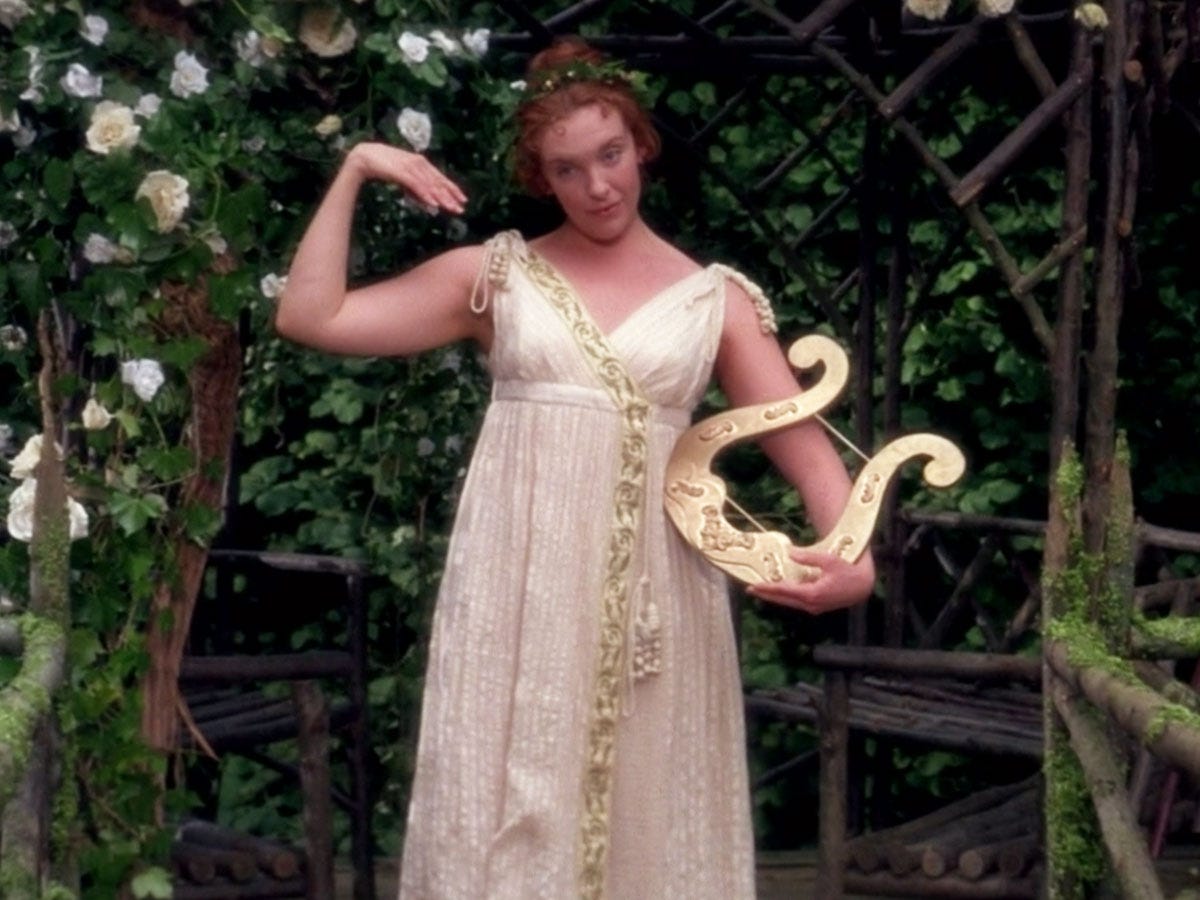
Miramax
Because of the film's jam-packed schedule and limited budget, Myers outsourced what she could by renting menswear and hats.
"It's a lot of trying to make things work and trying to rent stuff that you can to fill in so that you don't have to do everything from scratch," she said.
For Alan Cumming, who played Mr. Elton, she desired a specific silhouette with a "very narrow" cut and "extremely high collars." To make sure his costumes came out exactly the way she wanted, Myers designed all of his pieces herself.
"Alan Cumming is one of the greatest joys of all time to work with because he just loves clothes," she said. "He loves putting things on. So you give him something, he works it."
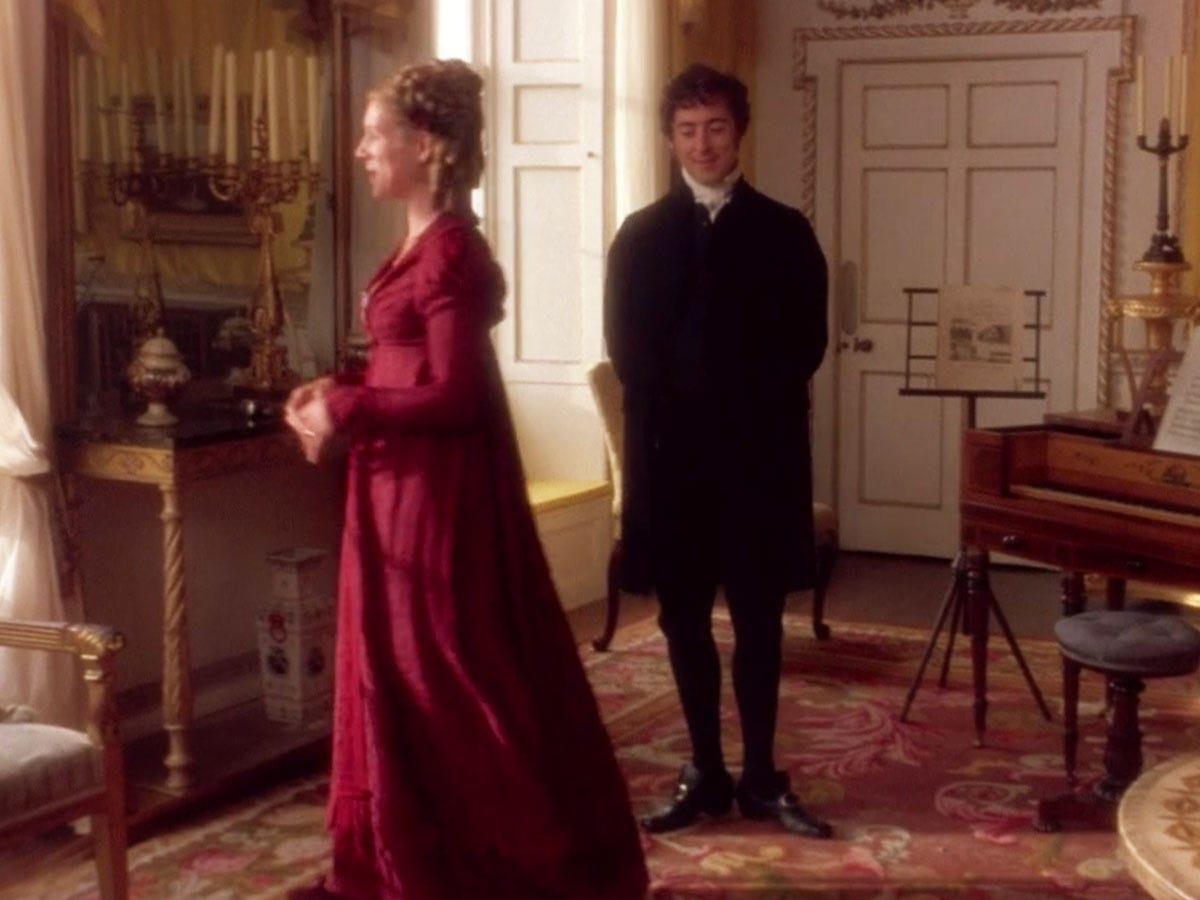
Miramax
Despite Austenites' initial resistance to Myers' take on 19th-century fashion, she eventually received recognition
Now, 25 years after "Emma" premiered in theaters, the Regency period's influence shows itself in mainstream fashion trends like puffy sleeves, corset tops, and empire-waisted Nap Dresses.
Myers attributes the renewed interest in the era (coined "Regencycore") to "Bridgerton," Netflix's wildly popular adaptation of Julia Quinn's romance novels. Like the wardrobe for "Emma," the dresses in "Bridgerton," a series set in 1813 London, are bright, candy-colored statements.
"That sort of series has a huge effect. The most influential things have been copied. Together with the pandemic and the joy of those costumes, which were divine, [people] loved them," she said.
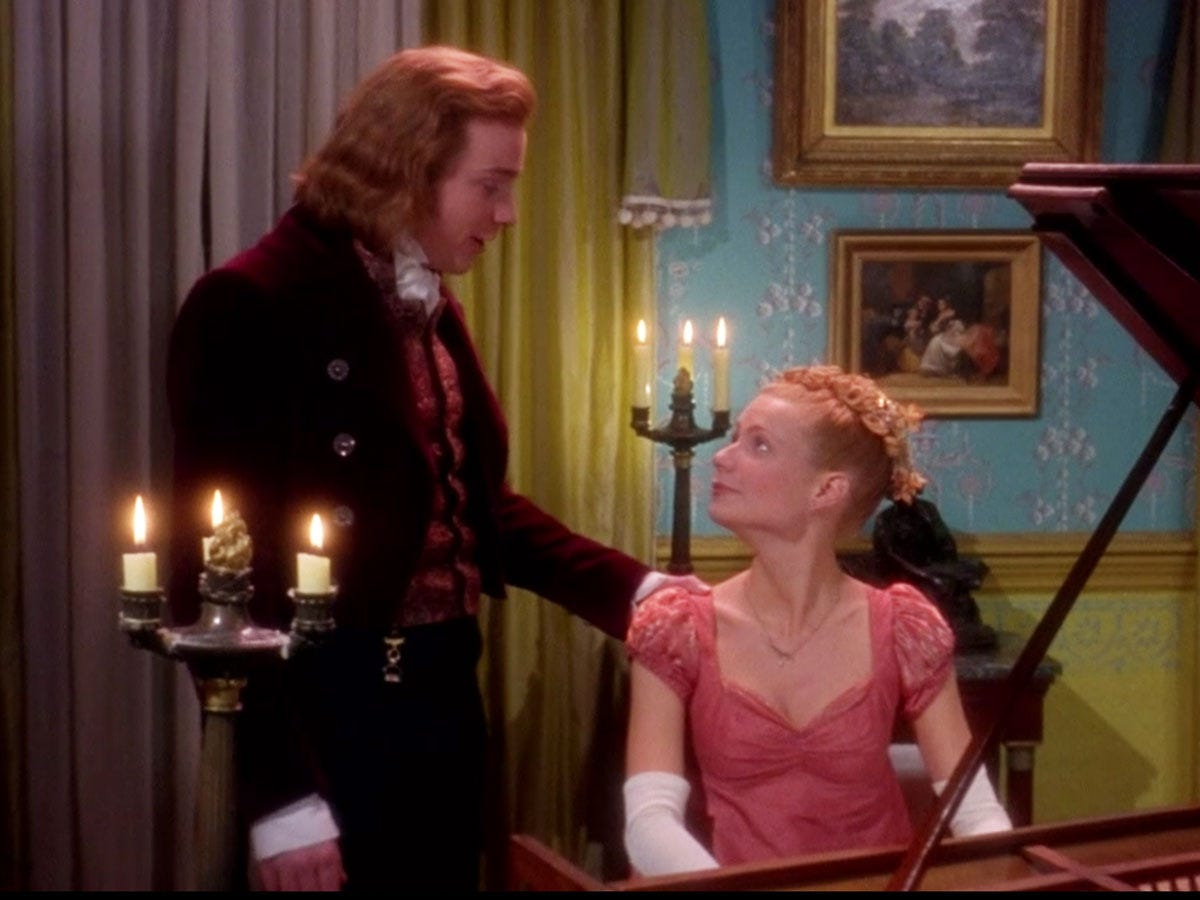
Miramax
"Emma" had its own ripple effect. Shortly after the film's theatrical release, Emma's wedding dress, a simple white gown with lace details and short sleeves, became the blueprint for many brides-to-be.
"For several years after that dress was used, it was the most copied wedding dress," Myers said. "At one point, Vera Wang said in an article that it was the dress people constantly asked her to reproduce."
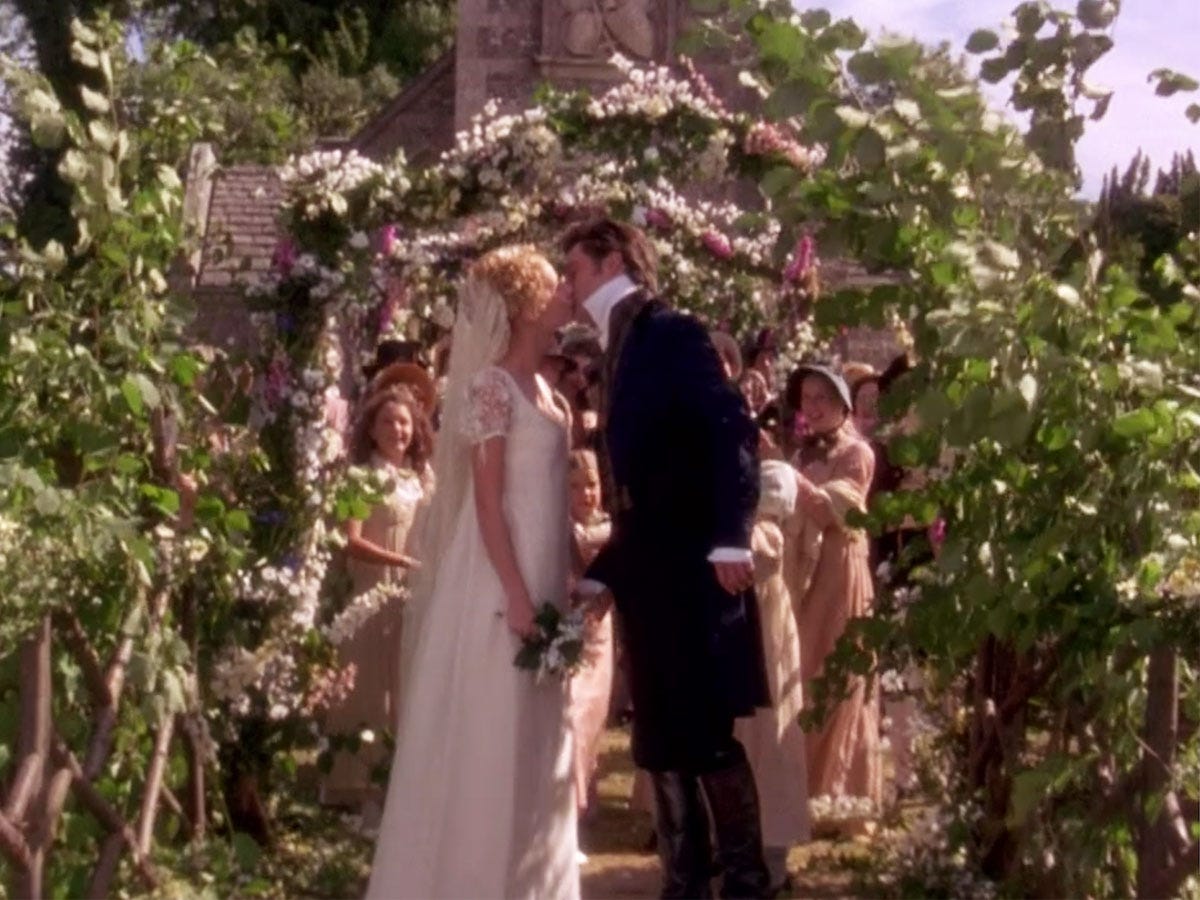
Miramax
"Emma" earned two Academy Award nominations, one for best original musical or comedy score and the other for best costume design. Though the Oscar for costume design went to "The English Patient" that year, receiving recognition from her peers was "very gratifying" for Myers, especially after being met with such resistance from traditional Austenites.
"They thought this was very disrespectful," she said, referring to die-hard fans' initial reactions to her colorful representation of early 19th-century clothing.
"They didn't mind quite as much when I got the nomination," she quipped.
